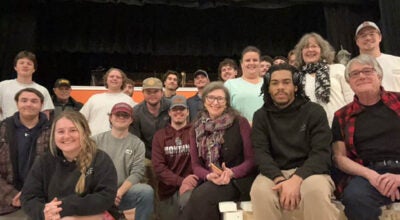Moton Museum receives $53,000 grant
Published 6:00 am Friday, July 3, 2020
|
Getting your Trinity Audio player ready...
|
The Moton Museum recently received a grant from the National Endowment for Humanities that will support the development of an online exhibition to aid in telling the story of how Prince Edward County was the birthplace of America’s student-led civil rights movement.
The $53,000 grant will be used to develop a virtual exhibit that compliments and enhances the museum’s permanent exhibition “Moton School Story: Children of Courage.” The museum was one of 300 cultural institutions across the country selected to receive $40.3 million in CARES Act economic stabilization grants from NEH.
The development of an online exhibit has been a long-term goal for the museum, but the timetable was accelerated rapidly due to the COVID-19 pandemic. The museum has been closed to in-person visitors since March. While the staff has transitioned to hosting a series of online educational programs, a virtual exhibit will allow school-age children to engage with the museum’s content directly.
“Even after the museum reopens this summer and schools begin to return to in-person instruction in phases this fall, we anticipate that due to the coronavirus pandemic school field trips and our ability to visit schools will be limited,” Cameron Patterson, managing director of the Moton Museum, said. “This reality will restrict the museum staff’s ability to deliver on-site and off-site in-person programming for some time. A content-rich online exhibition will give our staff a powerful tool around which to design educational programs that can approximate an in-person field trip experience.”
The conceptual framework and design elements for an online exhibit were completed after the opening of the museum’s permanent exhibition in 2013. The design, build out, testing, and review of the website content is expected to be completed by December 31.
The online exhibit will enable visitors to explore the galleries in a chronological way, similar to how they would physically move through the exhibition if they visited the museum. It will also have features that allow visitors to search across the galleries for documents, people, places, events and court cases. The online exhibition will also incorporate the most powerful aspect of the museum’s visitor experience—the stories of individuals who were locked out of Prince Edward County schools from 1959 to 1964.





